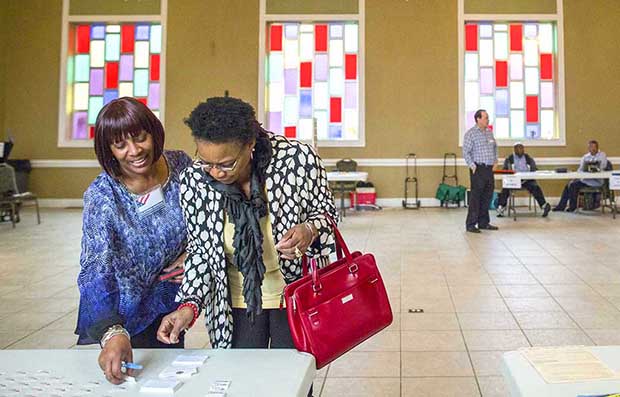AARP Hearing Center
On Super Tuesday, Older Voters Continue to Support Clinton
By Richard E. Cohen, March 2, 2016 10:59 AM

Older voters continued to roll up huge majorities for Hillary Clinton in Super Tuesday voting, as she built a clear lead in the Democratic presidential campaign.
In six southern states where Clinton won on March 1, she received between 72 and 87 percent of the vote from voters 45 to 64 and 65 and older, with a slightly stronger showing among the oldest voters, according to exit polls from the National Election Pool. She received between 64 and 78 percent of the total Democratic vote in those states, which stretched from Virginia to Texas.
Sen. Bernie Sanders of Vermont, Clinton’s sole challenger, won primaries and caucuses in four states: Colorado, Minnesota, Oklahoma and Vermont. The latter two states, which voted in caucuses, did not immediately have exit poll results. The two candidates ended in a virtual tie in Massachusetts in the unofficial results.
Enter to win a Volvo V60 Cross Country, a national parks vacation for two and more.
A delegate count compiled by the New York Times gave Clinton a lead of 544 to 349 among pledged delegates, with 2,383 required for a majority. That delegate count does not include more than 700 superdelegates — chiefly party and elected officials, who have voiced overwhelming support for Clinton.
The latest results left a lingering problem for Clinton among Democrats in the nominating contests. Of the nine states where exit poll results were released on Super Tuesday (all except for the caucus states of Colorado and Minnesota), Sanders led among voters 18 to 29 in all but Alabama, where Clinton got 54 percent. Elsewhere, he received from 54 to 95 percent from the youngest voters.
Sanders had his strongest showing by far in his home state of Vermont, with 86 percent of the primary vote. His weakest showing of 77 percent was among voters 65 and older.
In the border state of Oklahoma, where racial minorities are a smaller share of the population than in the Deep South, Sanders led 52 percent to 42 percent. He got 82 percent among voters 18 to 29 and 73 percent of those 30 to 44, while Clinton led with 48 percent among voters 45 to 64 and with 53 percent from seniors.
Virginia was a typical example of Clinton’s performance. She got 85 percent of the vote from voters 65 and older, 72 percent from voters 45 to 64, 57 percent of those 30 to 44, but only 30 percent of voters 18 to 29. A potentially worrisome sign for Clinton in this swing state is that Democratic turnout was only about 785,000 voters, compared to slightly over 1 million Republicans, according to the nearly final totals.
Next: Democrats are scheduled to vote March 5 in a primary in Louisiana and in caucuses in Kansas and Nebraska, and on March 6 in the Maine caucus. Republicans will vote March 5 in party caucuses in Kansas, Kentucky and Maine, and in the Louisiana primary.
Photo: Joe Buglewicz/The New York Times
Also of Interest
- Over 120,000 Americans sign petitions on Social Security
- The most important talk you need to have with your doctor
- Get Help: Find out if you're eligible for public benefits with Benefits QuickLINK
- Join AARP: savings, resources and news for your well-being
See the AARP home page for deals, savings tips, trivia and more.































































